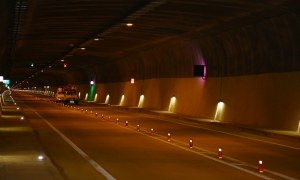🕑 Reading time: 1 minute
In most scheduling procedures, each work activity has an associated time duration. These durations are used extensively in preparing a schedule. Estimating activity duration can be carried out for a project phase or a
The soundness of a project schedule is mainly based on the accuracy of the duration of the various project activities as well as the definitions of the predecessor relationships among tasks.
Project-activity duration can be changed as work progresses and as new activities are identified in the project. Formally, the probability distribution of an activity's duration and the expected or most likely duration may be used in scheduling.
A probability distribution indicates the chance that a particular activity duration would occur. In advance of actually doing a particular task, one cannot be certain exactly for how long the task would require.
Analogous Estimating
In this technique, project activity duration is estimated based on the information and historical records of past projects that are similar. Past record information can be achieved from the Project Management Office or through other project managers.
This method is not accurate compared with other techniques as the peculiarities of the project make the accomplishment of a particular activity more or less difficult.
For example, access to the forms in a particular location may be difficult. As a result, the productivity of assembling forms may be lower than the average value for a particular project. Nonetheless, this approach is less costly and less time-consuming.
Since the scope of activities is unlikely to be identical between different projects, unit productivity rates are typically employed for this purpose. For example, the duration of an activity Dij such as concrete formwork assembly might be estimated as:

where:
Aij: required formwork area to assemble, typically determined from a
Pij: average productivity of a standard crew in this task (measured in square yards per hour), commercial services can provide average productivity figures for many standard activities of this sort. Historical records in a firm can also provide data for estimation of productivities.
Nij: number of crews assigned to the task which are decided by the planner
A formula such as Equation 1 can be used for nearly all construction activities. Sometimes, adjustments based on engineering judgment are made to the calculated duration from Equation 1 for this reason.
Factors Influencing Productivity Rate (Pij)
Uncertainties and changes in productivity make the estimation of a project-activity duration inaccurate. Therefore, it is crucial to discuss factors that influence the productivity rate.
1. Systematic Factors
1.1 Effect of Learning on Productivity Rate
Productivity rates may vary in both systematic and random fashions from the average. An example of systematic variation is the effect of learning on productivity. As a crew becomes familiar with an activity and the work habits of the crew, their productivity would typically improve.
Fig.1 illustrates the type of productivity increase that might occur with experience; this curve is called a learning curve. The result is that productivity Pij is a function of the duration of an activity or project.
A common construction example is that the assembly of floors in a building might go faster at higher levels due to improved productivity even though the transportation time up to the active construction area is longer.

1.2 Effect of Weather on Productivity Rates
The likelihood of a rainstorm is likely to vary systematically from one month or one site to the next. Adjustment factors for inclement weather as well as meteorological records can be used to incorporate the effects of weather on durations.
As a simple example, an activity might require ten days in perfect weather, but the activity could not proceed in the rain. Furthermore, suppose the rain is expected
2. Random Factors
2.1 Effect of Learning on Productivity
Random factors can also influence productivity rates and make the estimation of activity durations uncertain. For example, a scheduler may not know, at the time of making, the initial schedule of how
The productivity of a skilled designer may be many times that of an unskilled engineer. In the absence of specific knowledge, the estimator can only use average values of productivity.
2.2 Weather Factor
Weather effects are often very important and thus deserve particular attention in estimating duration. Weather has both systematic and random influences on activity duration. Whether or not a rainstorm would come on a particular day is certainly a random effect that influences the productivity of many activities.
Apart from Analogous method, there are other techniques by which duration of projects can be estimated such as parametric estimation which is similar to analogous but more accurate, expert judgement, and work breakdown structure which is used for activity that accounts for more than 10% of the project.


